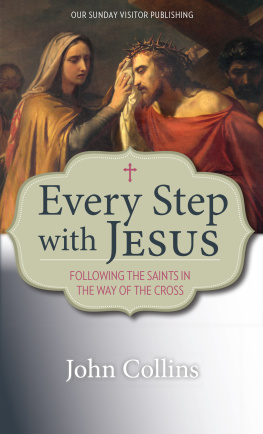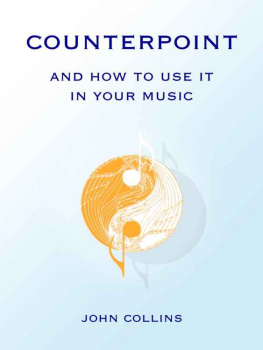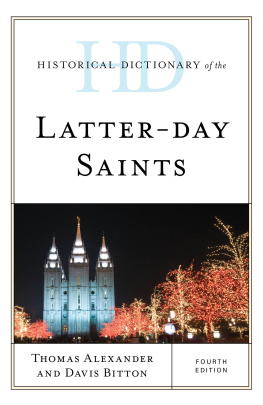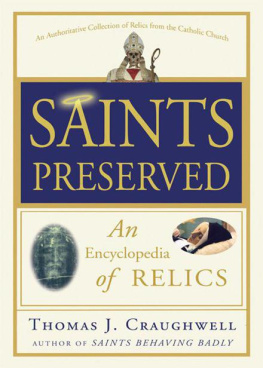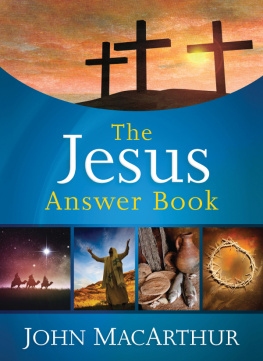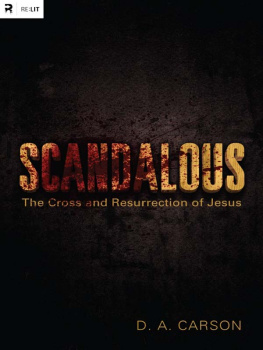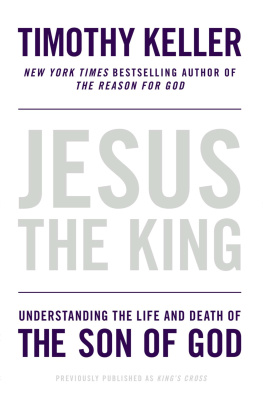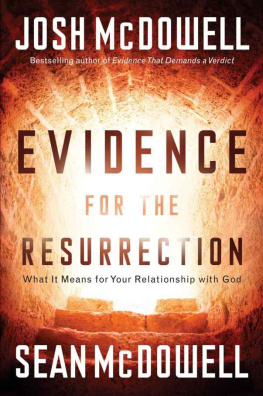
Every Step with Jesus
Following the Saints in the Way of the Cross
John Collins
Our Sunday Visitor
www.osv.com
Our Sunday Visitor Publishing Division
Our Sunday Visitor, Inc.
Huntington, Indiana 46750
S cripture quotations are from the Revised Standard Version of the BibleSecond Catholic Edition (Ignatius Edition), copyright 1965, 1966, 2006 National Council of the Churches of Christ in the United States of America. Used by permission. All rights reserved.
Every reasonable effort has been made to determine copyright holders of excerpted materials and to secure permissions as needed. If any copyrighted materials have been inadvertently used in this work without proper credit being given in one form or another, please notify Our Sunday Visitor in writing so that future printings of this work may be corrected accordingly.
Copyright 2016 by Our Sunday Visitor Publishing
Division, Our Sunday Visitor, Inc. Published 2016.
21 20 19 18 17 16 1 2 3 4 5 6 7 8 9
All rights reserved. With the exception of short excerpts for critical reviews, no part of this work may be reproduced or transmitted in any form or by any means whatsoever without permission from the publisher. For more information, visit: www.osv.com/permissions.
Our Sunday Visitor Publishing Division
Our Sunday Visitor, Inc.
200 Noll Plaza
Huntington, IN 46750
1-800-348-2440
ISBN: 978-1-68192-097-9 (Inventory No. T1832)
eISBN: 978-1-68192-108-2
LCCN: 2016952290
Cover design: Tyler Ottinger
Cover art: Sedmak | Dreamstime.com
Interior design: Dianne Nelson
P RINTED IN THE U NITED S TATES OF A MERICA
About the Author
John Collins has been an editor for several prominent publishing companies including Doubleday, Dell, and St. Martins Press. He began a long association with Father Benedict Groeschel during the 1990s when both of them worked to support the cause of canonization of Cardinal Terence Cooke. In 2008, John became Father Groeschels personal editor, working closely with him on all his writings. He is the author of A Friars Tale: Remembering Fr. Benedict J. Groeschel, C.F.R.
Dedicated to the memory of
Father Benedict Joseph Groeschel,
who knew what it meant to walk
the Way of the Cross
Contents
St. John Paul II
St. Pio of Pietrelcina (Padre Pio)
St. Thomas More
St. Bernard of Clairvaux
St. Leo the Great
St. Thrse of Lisieux
Dame Julian of Norwich
St. John Chrysostom
St. Faustina
St. Thomas Aquinas
St. Cyril of Jerusalem
St. Augustine
St. Catherine of Siena
St. Teresa of Calcutta
St. Teresa Benedicta of the Cross (Edith Stein)
Introduction
Walking with the Saints in the Footsteps of Christ
Out of darkness is born the light, writes St. Catherine of Siena. And in those few words she offers us a gift: a perfect way to begin our mediation on the Way of the Cross. Yet the birth of light is rarely on our minds as we follow Jesus slow and painful climb to Golgothas heights, for the darkness is too apparent, the gathering gloom too great. The light that Catherine perceives hides from us. We know it will come on Easter morning, but on Good Friday doesnt darkness reign supreme?
Catherine and the other saints are emphatic in their answer: No it does not! How could it, for the Way of the Cross is the way to the Resurrection, the way of redemption? The saints tell us that this dark journey contains within itself a great and powerful light that is present from the beginning, but is not apparent until the end. Long before Jesus stands in front of Pilate, the light of a new dawn has become real. It shines within Him and from His every act. It shines forth from the divine will that gives us a Savior and allows Him to live and die as one of us. It is a light powerfully present in every step Jesus takes as He makes His way through a darkness that becomes light, to a death that becomes life.
Catherine of Siena knows that out of darkness is born the light, just as she knows that out of Jesus sorrowful death unconquerable life is born. This is not just her vision but also the vision of countless saints who preceded us. We look to them as they lead us from Pilates unjust court to the brilliance of Easter morning. We meditate on their words and allow those words to dispel the darkness that surrounds us that pervades us. With their help we begin to perceive the light concealed within darkness and to accept the cross as the tree of unending life. Perhaps this understanding is captured most perfectly by St. Theodore the Studite, a monk whose life straddled the eighth and ninth centuries. So we will linger for a moment on his words before we begin to walk with Our Savior to His death and to our life:
How precious the gift of the cross, how splendid to contemplate! In the cross there is no mingling of good and evil, as in the tree of paradise: it is wholly beautiful to behold and good to taste. The fruit of this tree is not death but life, not darkness but light. This tree does not cast us out of paradise, but opens the way for our return. (Quoted in the Office of Readings for the Second Week of Easter)

The First Station
Jesus Is Condemned to Death
St. John Paul II
The future Pope John Paul II was born Karol Jsef Wojtya in Poland during the spring of 1920. His early life was far from ideal: He lost his mother and brother while still a child, and less than a decade later his father died as well. During World War II, Karol was forced by the Nazi occupation to abandon his studies and undertake backbreaking work in a quarry. Undaunted, he enrolled in an underground seminary and was ordained after the war. The young priest became a seminary professor and then a bishop who participated in the Second Vatican Council. Named archbishop of Krakw in 1964 and a cardinal in 1967, he was involved in the writing of the famous encyclical Humanae Vitae (Of Human Life). In 1978, Cardinal Wojtya was elected the first non-Italian pope in four centuries, embarking on a papacy that lasted nearly twenty-seven years. Pope John Paul II not only championed Christ and His Church in a world beset by secularism, atheism, and relativism, but he played a major role in the fall of communism. Perhaps the greatest of modern popes, St. John Paul II died in 2005 and was canonized in 2014. His feast day is October 22.
V. We adore You, O Christ, and we praise You.
R. Because by Your holy Cross You have redeemed the world.
And Pilate said to them, Then what shall I do with the man whom you call the King of the Jews? And they cried out again, Crucify him. And Pilate said to them, Why, what evil has he done? But they shouted all the more, Crucify him. So Pilate, wishing to satisfy the crowd, released for them Barabbas; and having scourged Jesus, he delivered him to be crucified (Mk 15:12-14).
A civil official discards truth. He makes his judgment based solely on expediency choosing death because it has become more convenient than life. Thus the creature grasps at the power that belongs to the Creator alone. It has been decreed: blind, uncaring man, so enamored of destruction, will attempt to annihilate the source of his own being. The Son of God will be put to death by those He has come to save. What greater decision for death for nothingness can there be than Pilates?
St. John Paul II knows this verdict to be a judgment on us all. Yet he also knows it to be the unavoidable first step on a path that leads not just to death but
Next page
